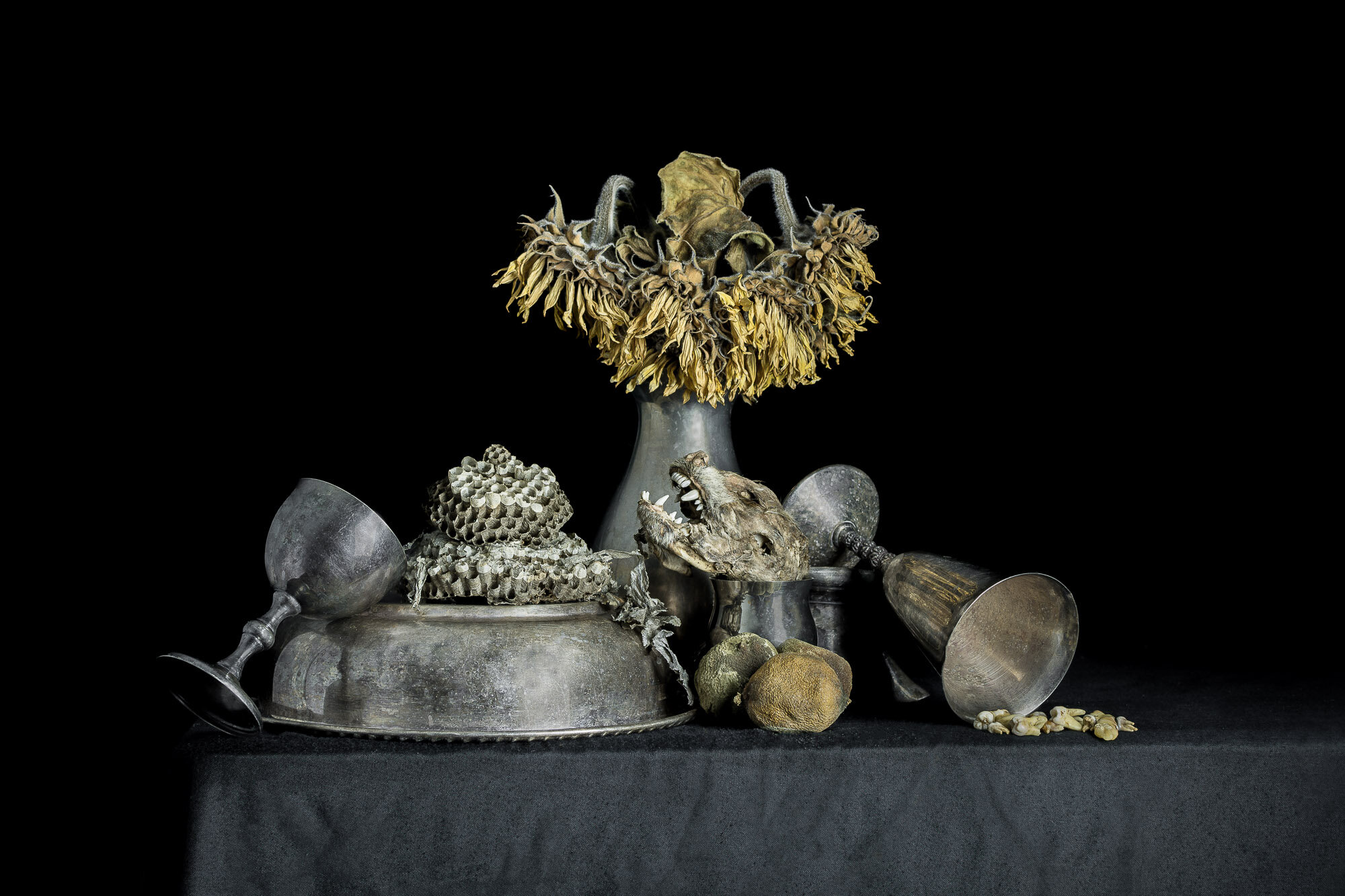The Universality of Decay
I recently came across this wasp nest, while playing in the park with my daughter.
I was immediately struck by the similarities between this relic and all those other beautiful husks in my collection: the mummified muskrat and racoon; the dried hydrangeas and sunflowers and chrysanthemums; the desiccated potatoes and peppers and lemons; the brittle exoskeletons of cicadas that I find, each year in autumn, gutted by birds and left to litter my driveway.
All these organic things, so very different in life, acquire a conspicuously similar character in death: the same brittle textures, like crumpled paper; the same colour palette of desaturated earth tones, those gloriously faded browns and greys and yellows; the same hard edges and irregular surfaces—the fractal geometry of broken things.
How is it possible for such a diversity of living things to die in such uniformity?
There’s a curious universality to the way things decay.
I’m not the first to notice this, of course. This idea underpins the biblical notion that “all flesh is grass.” (An idea so popular that it appears many times in the old testament and was a common epitaph on Christian grave markers in the 17th century.) The author of Ecclesiastes expresses this sentiment in stark terms: “All go to one place; all come from dust, and to dust all return.”
With these images, I wanted to reflect on the universality of decay and rot, taking the aesthetic similarities between these various dead things as a reminder that time and chance and death come equally to us all, and make us all equal when they come.
Because my formal educational background is in theoretical physics, not art, it’s always tempting for me to think in terms of cosmological timescales. Through this lens, even the dust of Ecclesiastes is transient—a momentary blip in the universe’s long journey toward the inevitable.
The sun will eventually burn up its fuel and collapse under its own mass. And whatever remains on earth will, in this moment, also die.
Even the dim afterglow of the big bang—the Cosmic Microwave Background—will eventually fade into insignificance.
And the very universe itself will, in all likelihood, succumb to its own “heat death,” evolving to a state of maximal disorder—a cold place where structure and life and beauty are impossible.
The fate of the brightest star and the tiniest candle are the same; both are inevitably extinguished. Even the brilliant light of the Big Bang—the massive explosion from which our whole universe was born—will eventually diminish and fade away, no different from the dim embers of a cigarette butt.
And the fate of these scavengers—the wasps, the raccoon, the coyote—is no different from our own. “All have the same breath,” said the author of Ecclesiastes.
There’s a curious universality in the way things end.


